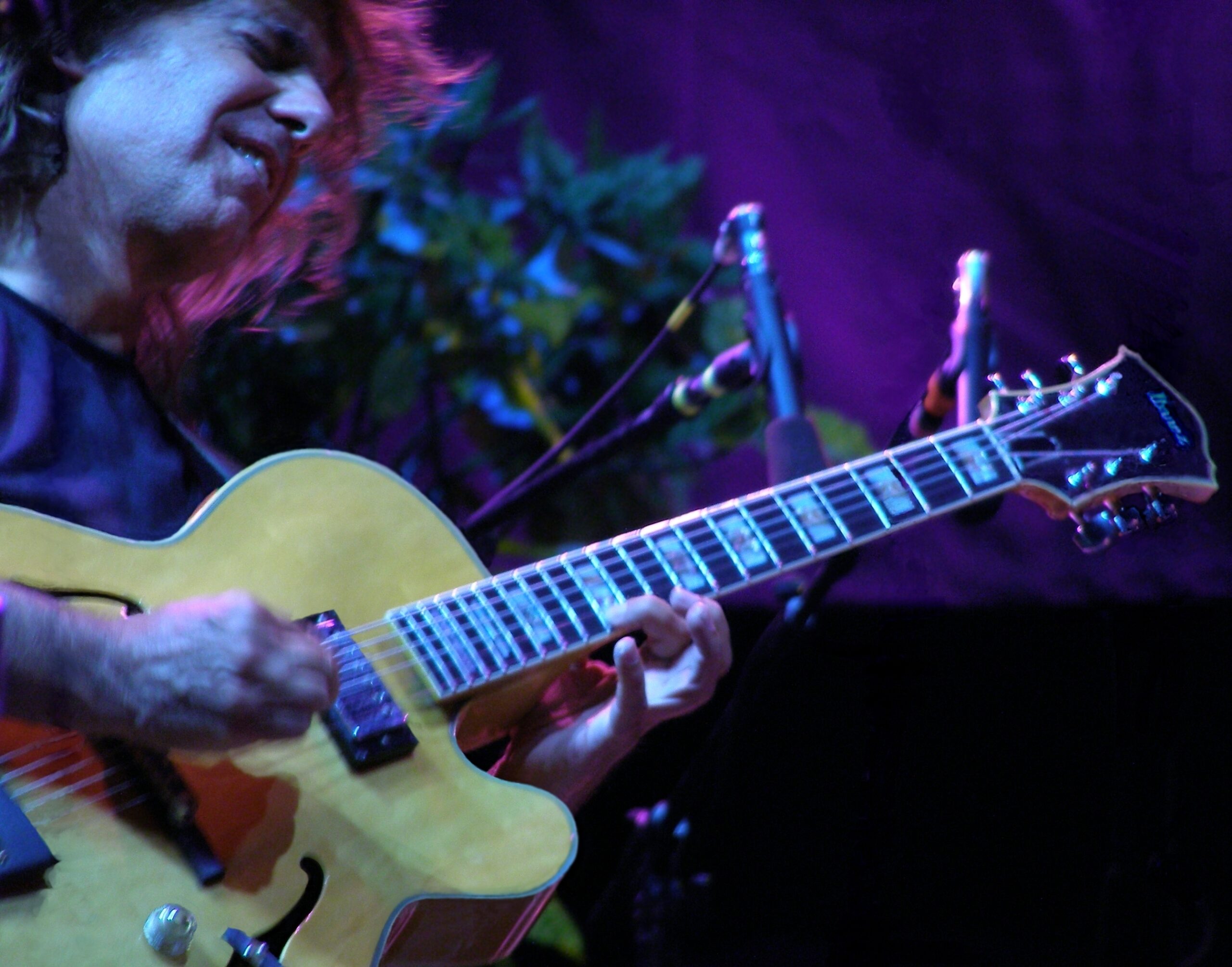The fascinating world of music excites curiosity and enchants the listener with its myriad moods, built through the use of various scales and chords. Of these, the E minor pentatonic scale stands out with its innate quality of versatility and mellifluousness. Composed of five tones, namely E, G, A, B, and D, this pentatonic scale in its minor form has become the cornerstone of emotional, heartfelt pieces across a vast array of music genres. It serves as an ever-enticing labyrinth to the artist, allowing for broad strokes of creativity while maintaining harmonic richness. Let’s embark on a captivating journey to understand the architecture behind the tonal structure of the E minor pentatonic scale, its relevance across different music genres, instances of classic performances, and how to incorporate it into personal music creation.
Understanding the E minor pentatonic scale
When striking the opening chord of an iconic blues riff or lacing the undertones of an emotive guitar solo, it’s often the electrifying notes of the E minor pentatonic scale that are gracing our ears. This renowned scale’s thrill lies in its impactful simplicity, and present in an array of musical genres including blues, rock, jazz, country and pop.
To give the unadorned facts, the E minor pentatonic scale comprises of five notes: E – G – A – B – D. In context, this means it’s a five-note scale (penta – five, tonic – tone) derived from the natural minor scale. E minor pentatonic is centered around E as its tonic or root note. From these five notes, a whole realm of musical emotions comes to life in seed form, providing a flexible canvas for creators and lovers of music alike.
What sets this scale apart – what does justice to its popularity – is its distinct innate versatility infused with an emotional depth that resonates with the human spirit on a primal level. It carries an undercurrent of sorrow, gloom even, yet carries hopefulness simultaneously. This sombre twinkle resonates with an unmatched versatility, able to effortlessly lend itself to a desolate blues number on a rainy night or bring life to a euphoric festival anthem.
Due to the minor pentatonic’s innate structure devoid of half steps, it allows for a vast and smooth canvas for string bending and wider, more fluid movements. This ‘open’ panorama makes E minor pentatonic an accessible choice for musicians of varied skill levels. It’s considered a backbone in the world of guitar solos, with its notes aligning perfectly within the comfortable reach of a typically stretched hand on a guitar fret board, setting a melodious playground for guitarists to express their nuances and artistic visions.
Paying homage to the golden age of rock ‘n’ roll, legends like Jimmy Page, Jimi Hendrix, and David Gilmour found a safe harbor in the E minor pentatonic, using its organic simplicity to unleash torrents of emotion. Listen to ‘Stairway to Heaven’ or ‘Comfortably Numb’, and you’ll hear the soul of E minor pentatonic echoed and immortalized.
Today, the E minor pentatonic scale’s signature is undeniably etched into the musical landscape. It serves as an integral introduction for budding musicians – an initial brush with the artistry within music. It’s a forum for advanced artists to display their innovative prowess and continues to paint the backdrop of pop culture. While the notes E – G – A – B – D might seem unassuming at the first glance, their collective potential to evoke raw emotion, channeled across genres and epochs, proves that the E minor pentatonic scale is nothing less than a timeless lingua franca in the world of music.

Relevance in genres
As a vein coursing through the body of music, the E minor pentatonic scale serves as more than just a key collection of notes. It extends beyond mere tonal arrangement, whispering tales of sorrow and joy, reflected in haunting melodies and foot-stomping riffs of various music genres.
The scale’s simple, yet evocative range holds a universal appeal. Recognized for characteristics that speak directly to the human condition, the pentatonic scale weaves a thread of commonality, stringing together different cultures and generations through music.
Delving into blues, the genre can be considered as the birthplace of this scale where it runs deep, becoming synonymous with the heart-wrenching refrains of stalwarts like B.B. King and Muddy Waters. Their music descendant from African spirituals, blues grew an emotional vocabulary rooted in this pentatonic scale.
The Lords of rock, too, have used this scale effectively as an avenue to electrifying authenticity. From Jimi Hendrix’s soul-stirring solos to Led Zeppelin’s roaring riffs, the E minor pentatonic scale serves as a backbone. Their compositions spiraled into the realm of musical legends infusing their pieces with something raw and visceral.
This scale also lends an extraordinary tonal quality to the gentler strains of folk music. Reverberating through the genre, from Joan Baez’s hushed strumming to Bob Dylan’s raspy narratives, the scale often plays the lead role. Its simplicity frees artists to focus on lyrics and allows them to express their stories more honestly.
Crossing musical boundaries, the pentatonic scale infiltrates jazz, a genre known for its improvisational freedom, harmonic complexity, and emotive range. Through the minor pentatonic scale, John Coltrane and Miles Davis ignited spontaneous moments of magic, pushing their music to the edge of creativity.
The same can be said of pop, which despite its heavy lean on major scales, has found value in the mellow allure of the E minor pentatonic. Captivating legions of listeners, pop icons from John Lennon to Bruno Mars have dipped into this well of melody to stir emotion in their audience.
As this scale hit the ear of listeners and musicians worldwide, it played a vital role in shaping world music. Be it the musical dialogues of African drumming or mournful strains of Eastern music, the E minor pentatonic scale found an impressive global footing.
Seeping through the musical soil of different genres, the tendrils of the E minor pentatonic scale have unfurled, feeding the roots and altering the landscape of music. However, it’s not the destination that matters in the end; the power of this scale extends its journey. And if music history serves as any guide, the journey of the E minor pentatonic scale is far from over.
Delving into the enchanting world of music, the E minor pentatonic scale holds a prominent place, stirring hearts and minds alike. This scale works its magic across an array of compositions, enticing its listeners by weaving a tale of melody and emotion.
Steeping in the smoky seduction of blues, the E minor pentatonic scale illuminates the soul-stirring works of B.B King’s “The Thrill is Gone.” The song beckons the moonscape of human emotion, simultaneously venturing into a realm of lost love and unfulfilled dreams, leading us to experience the heartache within the intricate labyrinths of the melody.
Within rock, few can escape the gravitational pull of the iconic Led Zeppelin’s “Stairway to Heaven.” A signature spectacle of the E minor pentatonic scale, it mirrors a celestial journey, binding the listeners to its orb. The timeless composition weaves an astral tapestry of sound, with Jimmy Page leveraging the versatility of this scale to mold the rhythm and craft an ethereal dreamscape of harmonious tranquility.
Folk music, synonymous with roots and raw emotions, equally embraces the E minor pentatonic scale. Bob Dylan’s “Blowin’ in The Wind” is a testament to the scale’s power to touch upon the fundamental questions of freedom and peace that resonate with humanity at its very core.
The E minor pentatonic scale sashays its way into jazz too, where the fantastic Thelonious Monk, a true aficionado of improvisation, integrates it into his classic composition “Straight, No Chaser”. The seemingly effortless flow and playful unpredictability only add to the inherent appeal of this extraordinary work, resonating with the listener’s deeper consciousness.
Modern pop circuits are no stranger to the irresistible lure of the E minor pentatonic scale, as Bruno Mars’ chart-topping number “Treasure” bears testimony. Incorporating the melodic prowess of the scale into the heart of uptown funk, the tune breathes life into the dance floor, intertwining listeners in an exuberant array of beats and melody.
Venturing into the universe of world music, one cannot overlook the omnipresence of the E minor pentatonic scale. Its vibrant energy reverberates through the sprawling landscapes of African drumming sequences while threading its way into the soulful essence of Eastern music, spelling out an unspoken bond that transcends geography and time.
Indeed, the E minor pentatonic scale’s journey in music history is beyond remarkable. From its humble origins, it has fanned out into a multitude of genres, shaping iconic compositions along its path. It is a testament to not just the universal appeal and timelessness of this scale but also the power of music as a language that serenades, tells stories, and brings people together.

Incorporating the E minor pentatonic scale in music creation
Becoming a musical virtuoso doesn’t necessarily require a grasp of complex musical theories or understanding an abundance of scales. Sometimes, a sense of creativity, an intuitive feel for music, and the knowledge of a single versatile scale can be the gateway towards musical prowess. The E minor pentatonic scale is one such key to unlock this gate, providing upcoming musicians a simpler path to create, perform, and leave a mark on the music world.
Given its simplicity and repetitive pattern, the E minor pentatonic scale forms an essential driving force behind various improvised solos and melodic lines. This scale’s pattern-based structure contributes to its seamless incorporation into guitar solos, bass lines, and even in carousing piano performances. So, those still basking in the dawn of their musical journey, make no mistake about the power of this seemingly accessible scale.
A profound knowledge of the E minor pentatonic is a significant advantage when composing original pieces. Its deep and melancholic undertone can evoke various moods, painting pictures both of romance and lost love, of victory and defeat. The scale’s reach is not restricted to compositions alone; it can equally supplement musical prowess during live performances. Citing Carlos Santana’s riveting, trailblazing guitar highlights at Woodstock in ’69 serves as the perfect example, transforming the crowd of 400,000 into his personal symphony through the wisdom of this scale.
Improvisation is a key aspect of any live performance, with its capacity to shape concerts into unique experiences, and this is unquestionably made simpler through the E minor pentatonic scale. Its five-note sequence aids in intuitive jams, allowing musicians to turn individual notes into expressive sentiments. This simple yet effective framework enables spontaneous creativity, without the dread of hitting a wrong note.
Moreover, understanding and implementing the E minor pentatonic scale provides musicians with an excellent tool for experimentation. By altering the tone, rhythm, or structure of the scale, they open up a cascade of variations and potential motifs. A bit of bending here, a hammer-on there; before you know it, potential anthems can emerge from the blend of creativity underlined by this seemingly simple scale.
Moreover, the beauty of music lies in its adaptability and how it can bring a varied audience together. Understanding how the E minor pentatonic scale influences different music genres is like holding a universal passport in the musical realm. It forms the essence of diverse music from ethereal Eastern melodies to pulsating African beats, and from the raw emotion of blues to the exhilarating riffs of rock.
Armed with the E minor pentatonic scale, and the courage to explore its vast canvas of possibilities, the budding musician can indeed become a maestro. Think not of it as merely a sequence of five notes but as a versatile tool that holds the power to unify multi-genre listener bases. Music is a language spoken not in words but in emotions; the E minor pentatonic scale is one dialect that crosses every boundary. It takes the listener on an emotional journey, be it through the winds of romance, the depths of sorrow, the heights of joy, or the tranquillity of solace. Embrace it, experiment with it, and spectacles of music and art are sure to unfurl.
A deep dive into the composition and application of the E minor pentatonic scale reveals its immense creative potential. Whether it’s belting out a gritty blues solo, providing the tonal framework for a rock anthem, giving a jazz tune its soulful undertones, or adding depth to a metal riff, this versatile scale finds a place of prominence. Each note played, each chord struck resonates with a distinct emotion within us, demonstrating the potent and timeless power of this pentatonic scale. So, whether you are an aspiring musician, a seasoned performer, or a listener with a keen ear, the knowledge of the E minor pentatonic scale enriches and enhances your understanding of music, granting you a different perspective through which to appreciate the art form. The E minor pentatonic scale truly is a melodic catalyst for the creation of memorable, soul-stirring music, waiting to be explored.







